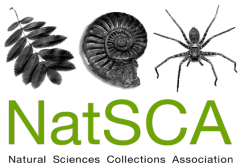Gaining young children’s perspectives on natural history collections
Young children are an important audience for natural history museums, and there is a general belief amongst the public and museum staff alike that these museums are particularly suitable for younger visitors. However, direct research with children under the age of six years is challenging and therefore scant, and without a proper understanding of our audiences, we risk producing exhibitions that are uninteresting, irrelevant or even off-putting. Over the course of 2011, I carried out research at the Oxford University Museum of Natural History, developing a method that uses children’s digital photography as a focus for interviews with participants aged four and five years old, on everyday family visits. This has proven to be an extremely effective way of accessing the viewpoints of young children, and has demonstrated that certain aspects of their museum experience are often unknown to accompanying adults. The research project has the joint aims of developing an audience research methodology, and revealing the viewpoints of this important but under-researched audience. This paper will begin with a brief description of the method, before a summary of some of the elements of the museum, collections and displays that have proven to be particularly attractive to the children and suggestions of what significance this could have for museums.
